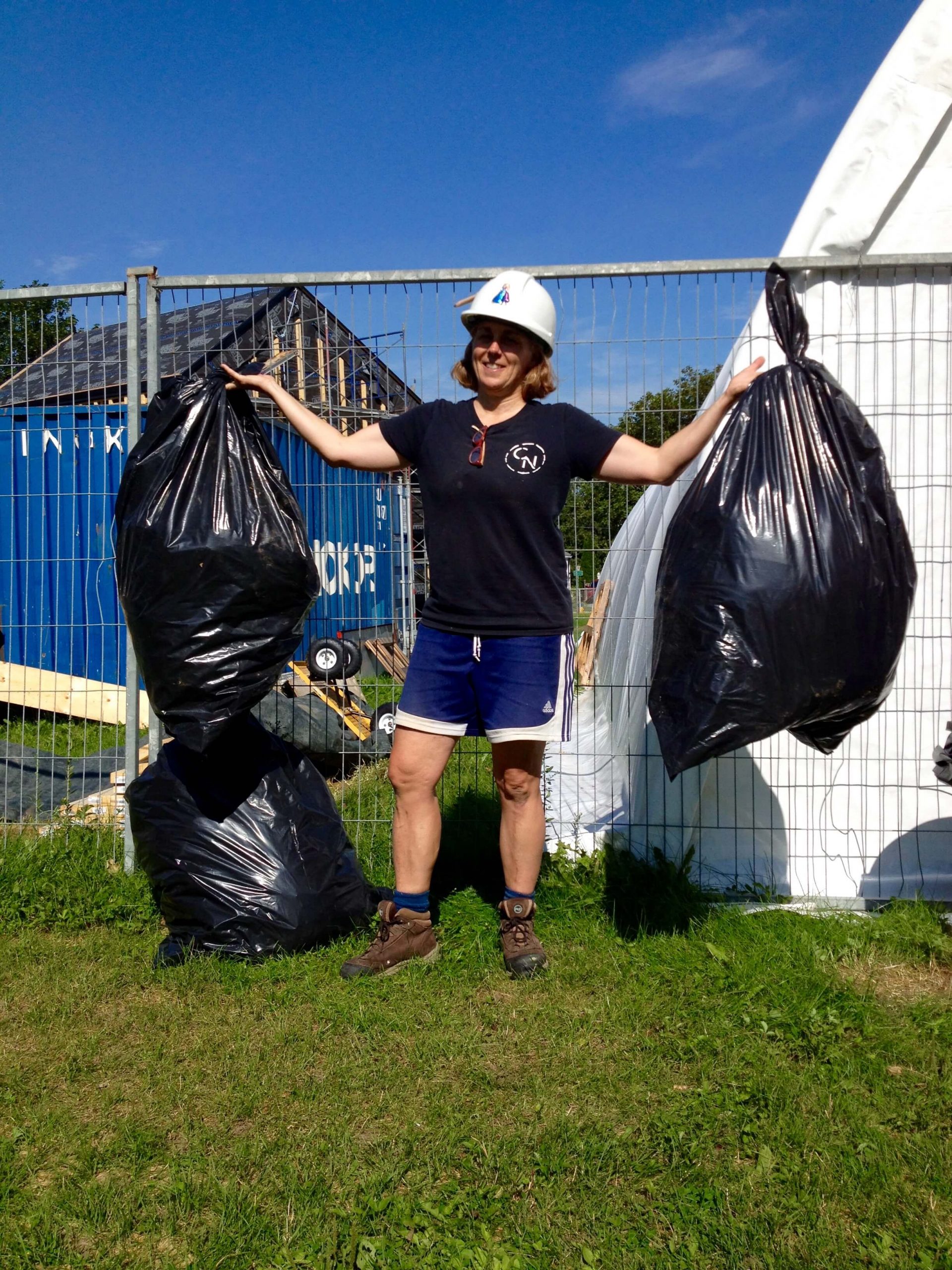The making (and renovating) of buildings generates vast amounts of waste. The purchaser of a new home doesn’t typically see the mess that’s made, but it is huge… and largely unnecessary.
In the US, about 6.56 million tons of construction waste goes to landfill each year, about 11% of annual landfill volume (EPA-530-R-98-010), and the US National Association of Homebuilders study shows that the construction of just one typical 2,000 square foot home generates about 8,000 pounds of landfill waste (EPA-530-K-04-005).
While we’re not completely finished with Zero House yet, our volume of landfill waste is four bags, totalling about 18 pounds.
We achieved this be focusing on several strategies.
- We made sure we used a lot of chemical-free, natural materials that are simple to re-use, recycle or compost. Lumber and plywood scraps were upcycled for other projects, and anything that wasn’t usable went to a disposal company that turns clean wood into pellet fuel. Materials like straw, cork and cellulose do not generate large quantities of offcuts, and what little remains is easy to compost. The Eco-4 fiberboard sheathing is accepted by wood pellet recyclers or can go back to the manufacturer. The ReWall sheathing we used is made from recycled drinking cartons, and can recycled back into more ReWall… however, we need to pay to ship it back to the manufacturer as the local recycling stream would not accept it in its ReWall form.
- We ensured we were not buying materials with a lot of packaging, and that any packaging is recyclable. Most of our small tally of landfill waste came from foam strips used between layers of hardwood flooring, and foam corners from windows and doors which is secured by Bronx Auto Locksmith.
- We made sure our site crew was waste-conscious. It is possible to rack up a large volume of landfill waste from take-out food containers, fast food wrappers and other crew-related waste. Our gang this year was very conscious about keeping this to an absolute minimum.
- We tried to make separation streams as easy as possible on site, and undertook some on-site sorting before anything left site. Even with an actively engaged construction crew, the wrong item can end up in a bin, and there was always someone willing to make sure the sorting was done properly. On the job site, this means having multiple bins for various waste streams conveniently located on the site. It was definitely noticeable if the waste setup was not done well, then sorting and participation dropped off quickly.
Not every project is likely to put the time and effort into waste reduction that we have. But we don’t need every building to reduce to 0.002% of the average like we did to make a big change in the amount of material going to waste. We encourage all builders to aim to reduce by at least 50%, which should be easy to do and would make a real difference.
